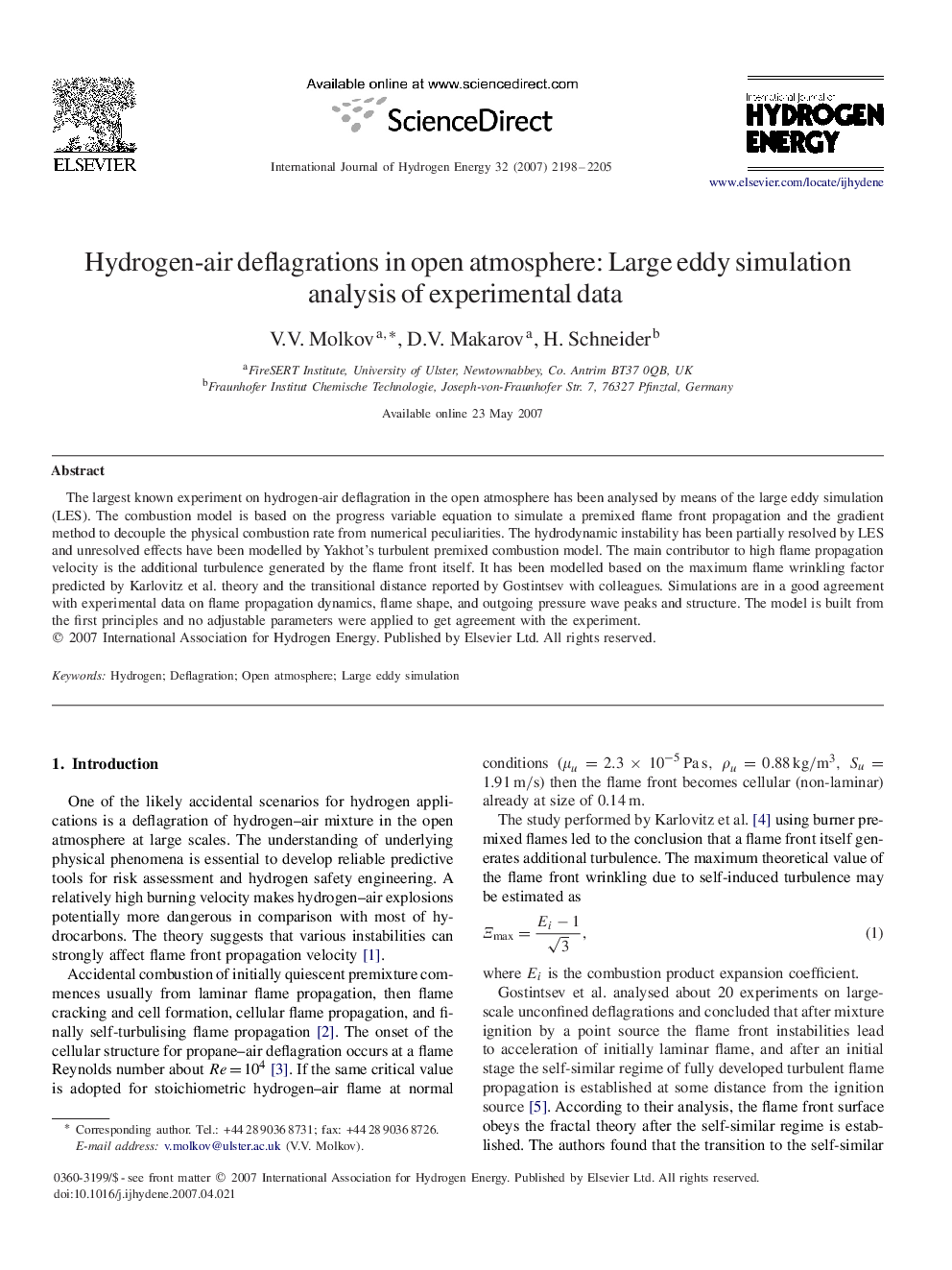| Article ID | Journal | Published Year | Pages | File Type |
|---|---|---|---|---|
| 1280321 | International Journal of Hydrogen Energy | 2007 | 8 Pages |
The largest known experiment on hydrogen-air deflagration in the open atmosphere has been analysed by means of the large eddy simulation (LES). The combustion model is based on the progress variable equation to simulate a premixed flame front propagation and the gradient method to decouple the physical combustion rate from numerical peculiarities. The hydrodynamic instability has been partially resolved by LES and unresolved effects have been modelled by Yakhot's turbulent premixed combustion model. The main contributor to high flame propagation velocity is the additional turbulence generated by the flame front itself. It has been modelled based on the maximum flame wrinkling factor predicted by Karlovitz et al. theory and the transitional distance reported by Gostintsev with colleagues. Simulations are in a good agreement with experimental data on flame propagation dynamics, flame shape, and outgoing pressure wave peaks and structure. The model is built from the first principles and no adjustable parameters were applied to get agreement with the experiment.
